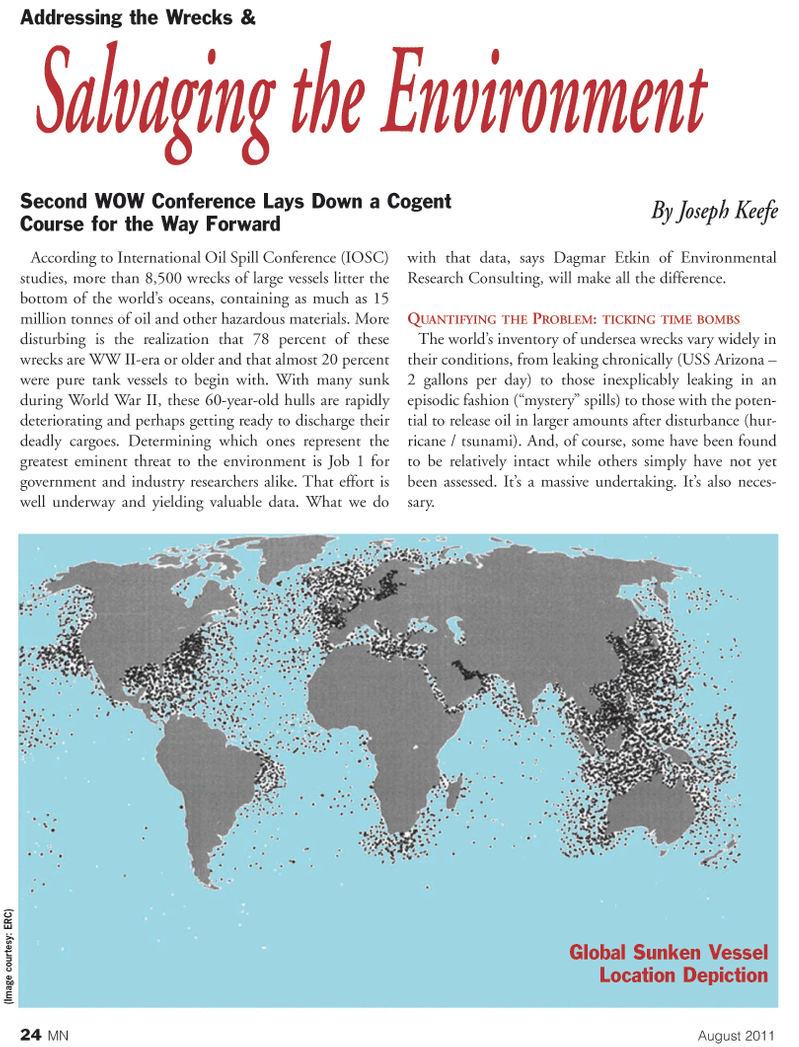
Page 24: of Marine News Magazine (August 2011)
Marine Salvage & Recovery Edition
Read this page in Pdf, Flash or Html5 edition of August 2011 Marine News Magazine
24MNAugust 2011According to International Oil Spill Conference (IOSC) studies, more than 8,500 wrecks of large vessels litter the bottom of the worlds oceans, containing as much as 15 million tonnes of oil and other hazardous materials. More disturbing is the realization that 78 percent of these wrecks are WW II-era or older and that almost 20 percent were pure tank vessels to begin with. With many sunk during World War II, these 60-year-old hulls are rapidly deteriorating and perhaps getting ready to discharge their deadly cargoes. Determining which ones represent the greatest eminent threat to the environment is Job 1 for government and industry researchers alike. That effort is well underway and yielding valuable data. What we do with that data, says Dagmar Etkin of Environmental Research Consulting, will make all the difference. QUANTIFYINGTHE PROBLEM : TICKINGTIMEBOMBS The worlds inventory of undersea wrecks vary widely in their conditions, from leaking chronically (USS Arizona ? 2 gallons per day) to those inexplicably leaking in anepisodic fashion (mystery? spills) to those with the poten- tial to release oil in larger amounts after disturbance (hur- ricane / tsunami). And, of course, some have been found to be relatively intact while others simply have not yet been assessed. Its a massive undertaking. Its also neces- sary. Addressing the Wrecks & Salvaging the Environment By Joseph Keefe (Image courtesy: ERC) Global Sunken Vessel Location DepictionSecond WOW Conference Lays Down a Cogent Course for the Way Forward

 23
23

 25
25
